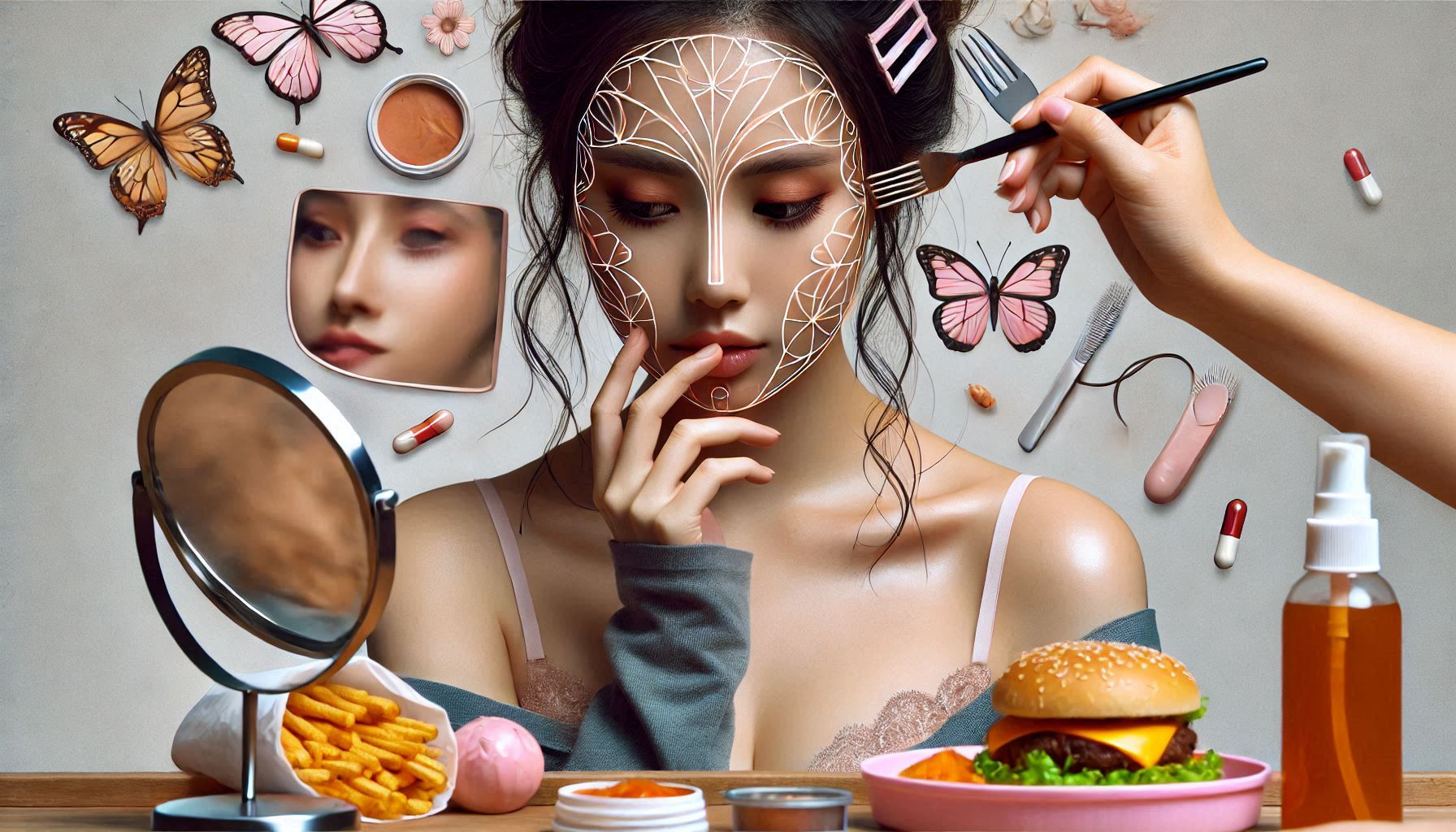Societal beauty standards have long shaped perceptions of femininity and attractiveness, dictating ideals that women often feel pressured to emulate. While beauty norms vary across cultures and time periods, one consistent thread is their pervasive influence on self-esteem, body image, and mental health. For many women, these pressures can lead to harmful behaviors, including the development of eating disorders. To address this issue comprehensively, it is essential to understand the societal origins of beauty standards, their psychological effects, and strategies for fostering resilience and positive body image.
The Evolution of Beauty Standards
Beauty ideals are not static; they evolve with societal, cultural, and economic shifts. Historically, these standards have reflected a combination of artistic preferences, cultural values, and economic conditions.
- Renaissance Era: During the Renaissance (14th–17th centuries), fuller-figured women were often idealized as symbols of wealth and fertility. This preference reflected the societal association between body size and affluence in a time when food scarcity was common.
- Victorian Era: In the 19th century, beauty ideals shifted toward an hourglass figure, marked by a tiny waist achieved through the use of corsets. This standard emphasized a woman’s role as a decorative figure and homemaker.
- 1920s Flapper Era: The Roaring Twenties brought a stark departure from Victorian ideals. Slender, boyish figures became fashionable, reflecting women’s increasing independence and the rejection of traditional gender roles.
- Post-World War II: The mid-20th century celebrated curvier figures again, exemplified by icons like Marilyn Monroe. However, as consumer culture grew, media began to play a significant role in perpetuating narrow beauty ideals.
- Modern Era: In recent decades, beauty standards have been increasingly shaped by mass media, social media, and celebrity culture. Thinness, combined with specific features such as toned muscles or a certain complexion, has dominated Western ideals, often to the detriment of mental health.
Media and the Propagation of Unrealistic Beauty Standards
The modern media landscape has intensified societal pressures around beauty. Advertisements, films, and social media platforms frequently showcase idealized, often unattainable, images of women’s bodies. This widespread representation creates a distorted perception of what is “normal” or desirable.
Role of Traditional Media
Magazines, television, and movies have long propagated idealized beauty standards. Airbrushed photos and carefully curated imagery in advertisements perpetuate the notion that flawlessness is attainable—if only one buys the right products or adopts certain lifestyles. These messages often target women, reinforcing a cycle of dissatisfaction and consumerism.
Impact of Social Media
Social media has exacerbated these issues by creating platforms for constant comparison. Apps like Integra and Ticktack feature influencers who often portray curated, filtered, and sometimes surgically enhanced versions of themselves. For many women, especially adolescents, exposure to such content correlates with negative body image, increased anxiety, and greater risk of developing disordered eating behaviors. Studies have shown that the more time women spend on social media, the higher their likelihood of internalizing unrealistic beauty standards.
Psychological Effects of Societal Pressures
The relentless pressure to conform to beauty standards can have profound psychological effects on women. Key areas of impact include self-esteem, body dissatisfaction, and mental health disorders.
Body Dissatisfaction
Body dissatisfaction arises when there is a disparity between one’s perceived body and the idealized standard. This dissatisfaction is a major predictor of disordered eating behaviors. Women who internalize societal beauty ideals often experience shame, guilt, and frustration over their inability to meet these expectations.
Impact on Self-Esteem
Low self-esteem is another common consequence of societal beauty pressures. Women who equate their worth with physical appearance may struggle to value their accomplishments or inner qualities. This external validation trap often leads to chronic self-criticism and feelings of inadequacy.
Development of Eating Disorders
Eating disorders, including anorexia nervosa, bulimia nervosa, and binge eating disorder, frequently emerge as coping mechanisms for managing body dissatisfaction and societal pressures. According to the National Eating Disorders Association (NEDA), approximately 20 million women in the U.S. alone will experience an eating disorder in their lifetime.
- Anorexia Nervosa: Characterized by extreme food restriction and an intense fear of gaining weight, anorexia is often associated with a distorted body image. Women with anorexia may perceive themselves as overweight even when underweight, a perception reinforced by societal glorification of thinness.
- Bulimia Nervosa: Bulimia involves cycles of binge eating followed by purging behaviors such as vomiting or excessive exercise. Women with bulimia often feel trapped in a cycle of guilt and shame fueled by societal stigmas around weight.
- Binge Eating Disorder: This condition is marked by recurrent episodes of overeating, often accompanied by feelings of loss of control and distress. Unlike anorexia and bulimia, binge eating disorder does not always result in significant weight loss, leading to stigma and under diagnosis.
Cultural Influences on Beauty and Body Image
Cultural variations play a significant role in shaping beauty standards and their effects on body image. While Western cultures often emphasize thinness, other societies may prioritize different ideals, such as curviness or skin tone. However, globalization and the pervasive reach of Western media have led to the homogenization of beauty standards, spreading harmful ideals worldwide.
Intersectionality and Beauty Standards
For women of color, cultural and societal pressures intersect with racialized beauty standards. For example, Black women may face pressures to conform to Eurocentric beauty ideals, such as straight hair or lighter skin, while simultaneously navigating cultural expectations within their communities. Similarly, Asian women may feel pressured to maintain petite figures and fair complexions, ideals perpetuated by both Western and traditional media.
Societal Solutions and Interventions
Addressing the harmful impact of societal beauty standards on women’s mental health and eating behaviors requires a multifaceted approach that includes media literacy, education, and policy changes.
Promoting Media Literacy
Teaching women and girls to critically analyze media messages is a powerful tool for reducing the impact of harmful beauty ideals. Media literacy programs can:
- Highlight the use of editing, filters, and unrealistic portrayals in advertisements.
- Encourage a broader definition of beauty that celebrates diversity.
- Promote self-esteem by emphasizing accomplishments and inner qualities over appearance.
Encouraging Representation and Diversity
Brands, media outlets, and influencers have a responsibility to represent diverse body types, ethnicities, and ages. Initiatives like the body positivity movement and campaigns such as Dove’s “Real Beauty” have made strides in challenging narrow beauty standards, but sustained efforts are needed to normalize diversity in mainstream media.
Policy and Regulation
Governments can play a role in mitigating the impact of harmful beauty standards by:
- Regulating misleading advertisements that promote unattainable body ideals.
- Mandating disclaimers for digitally altered images.
- Supporting mental health initiatives that focus on body image and eating disorder prevention.
Building Resilience and Positive Body Image
Beyond societal changes, individuals can take proactive steps to foster resilience and a positive relationship with their bodies. Strategies include:
Practicing Self-Compassion
Self-compassion involves treating oneself with kindness and understanding, especially during moments of self-doubt or body dissatisfaction. This practice can counteract the harsh self-criticism often fueled by societal pressures.
Engaging in Supportive Communities
Joining groups or networks that celebrate body diversity and promote acceptance can help women develop a healthier self-image. Supportive communities provide a counter-narrative to mainstream beauty ideals.
Seeking Professional Help
For women struggling with severe body dissatisfaction or eating disorders, professional intervention is crucial. Therapies such as cognitive-behavioral therapy (CBT) and dialectical behavior therapy (DBT) have proven effective in addressing these issues.
Focusing on Health Over Appearance
Shifting the focus from aesthetics to overall health and well-being encourages women to prioritize self-care and appreciate their bodies for their functionality rather than their appearance.
The Future of Beauty Standards
As society continues to grapple with the consequences of harmful beauty ideals, there is hope for change. Movements promoting body neutrality and self-acceptance are gaining traction, emphasizing the idea that beauty is not the measure of one’s worth. By challenging traditional narratives and advocating for systemic change, individuals and communities can work together to create a more inclusive and empowering environment for women.
Conclusion
The link between societal beauty standards and eating disorders in women underscores the urgent need for cultural, educational, and systemic change. By addressing the root causes of body dissatisfaction and promoting diverse representations of beauty, society can mitigate the harmful effects of these pressures. Empowering women to embrace their individuality and value themselves beyond their appearance is not just a matter of mental health but a step toward a more equitable and compassionate world.
SOURCES
National Eating Disorders Association (NEDA) – “Statistics & Research on Eating Disorders,” NEDA, 2023.
American Psychological Association (APA) – “The Role of Media in Body Image Concerns Among Women,” APA Journal of Health Psychology, 2022.
Dove Campaign for Real Beauty – “Dove’s 20-Year Journey to Redefine Beauty,” Harvard Business Review, 2021.
World Health Organization (WHO) – “Mental Health and Media Representation: A Global Perspective,” WHO Report, 2020.
Jean Kilburn’s Work – “Killing Us Softly: Advertising’s Image of Women,” Media Education Foundation, 2019.
Research Studies on Social Media – “Social Media, Body Image, and Mental Health,” Journal of Adolescence, 2023.
Naomi Wolf – “The Beauty Myth: How Images of Beauty Are Used Against Women,” HarperCollins, 1991.
Health line and Mayo Clinic – “Eating Disorders: Symptoms and Causes,” Mayo Clinic, 2023.
Cultural and Intersectional Perspectives – “The Radicalized Body and Beauty Ideals,” Sociology of Race and Ethnicity, 2022.
UNESCO – “Empowering Youth through Media Literacy Education,” UNESCO, 2020.
HISTORY
Current Version
December 12, 2024
Written By
ASIFA








Leave a Reply